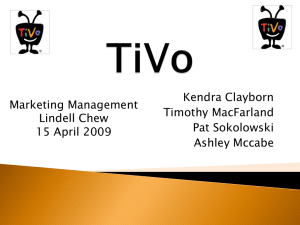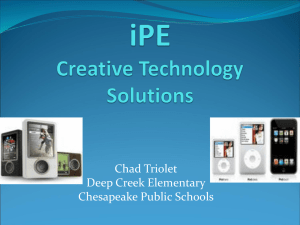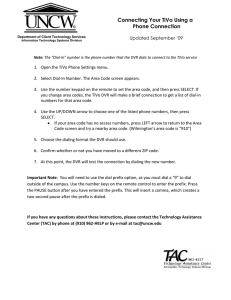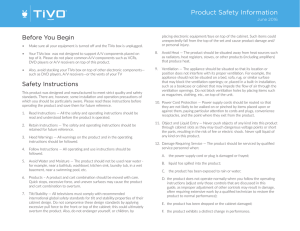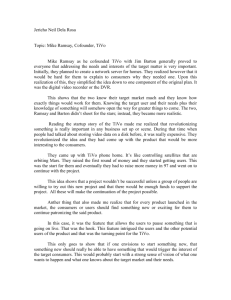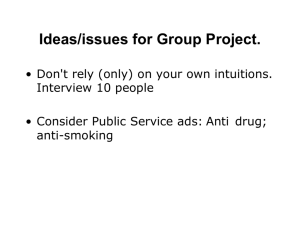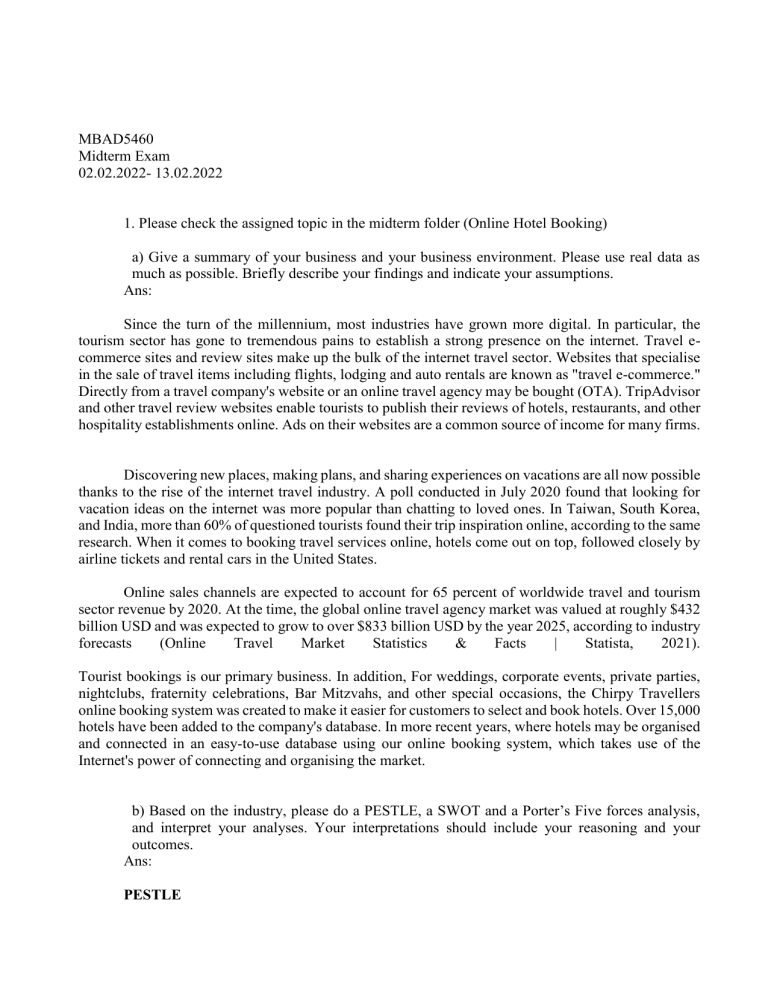
MBAD5460 Midterm Exam 02.02.2022- 13.02.2022 1. Please check the assigned topic in the midterm folder (Online Hotel Booking) a) Give a summary of your business and your business environment. Please use real data as much as possible. Briefly describe your findings and indicate your assumptions. Ans: Since the turn of the millennium, most industries have grown more digital. In particular, the tourism sector has gone to tremendous pains to establish a strong presence on the internet. Travel ecommerce sites and review sites make up the bulk of the internet travel sector. Websites that specialise in the sale of travel items including flights, lodging and auto rentals are known as "travel e-commerce." Directly from a travel company's website or an online travel agency may be bought (OTA). TripAdvisor and other travel review websites enable tourists to publish their reviews of hotels, restaurants, and other hospitality establishments online. Ads on their websites are a common source of income for many firms. Discovering new places, making plans, and sharing experiences on vacations are all now possible thanks to the rise of the internet travel industry. A poll conducted in July 2020 found that looking for vacation ideas on the internet was more popular than chatting to loved ones. In Taiwan, South Korea, and India, more than 60% of questioned tourists found their trip inspiration online, according to the same research. When it comes to booking travel services online, hotels come out on top, followed closely by airline tickets and rental cars in the United States. Online sales channels are expected to account for 65 percent of worldwide travel and tourism sector revenue by 2020. At the time, the global online travel agency market was valued at roughly $432 billion USD and was expected to grow to over $833 billion USD by the year 2025, according to industry forecasts (Online Travel Market Statistics & Facts | Statista, 2021). Tourist bookings is our primary business. In addition, For weddings, corporate events, private parties, nightclubs, fraternity celebrations, Bar Mitzvahs, and other special occasions, the Chirpy Travellers online booking system was created to make it easier for customers to select and book hotels. Over 15,000 hotels have been added to the company's database. In more recent years, where hotels may be organised and connected in an easy-to-use database using our online booking system, which takes use of the Internet's power of connecting and organising the market. b) Based on the industry, please do a PESTLE, a SWOT and a Porter’s Five forces analysis, and interpret your analyses. Your interpretations should include your reasoning and your outcomes. Ans: PESTLE Political: In the same way that tourism and hospitality are impacted by political considerations, the online hotel business is also impacted. There will be no or very little demand for hotels if governments such as those in the United States or Great Britain implement travel restrictions. The opposite is true: a warm political welcome aids the hotel industry's expansion. Economic: Exchange Rates, Labor Productivity, GDP Trends and Economic Growth Rates, Household Income and Savings Rates, Fiscal and Monetary Policies Social: Immigration Policies and Immigration Levels, The level of social concern and awareness in society, the level of education in society Health and Safety Attitudes, Demographic Trends and Leisure Attitudes Technological: Production Costs and Trends, Acceptance of Mobile Payments and Fintech Services, Level of Technology Acceptance in Society, and Integration of Technology into Society and Business Processes Environmental: Carbon Emissions Per Capita and Nationally, Recycling Policies, the Paris Climate Agreement and the National Government's commitment to the Agreement, the Influence and Effectiveness of Environmental Agencies, and the Level of Consumer Activism on Environmental Issues Legal: Business Laws, Common Law Compliance, Anti-Monopoly and Restriction of Trade Laws, Consumer Protection Laws, Securities Law, Occupational Health and Safety Laws, and Employment Laws Porter’s Five Forces SWOT Strength: Focus on delivering great consumer experience, big portfolio of hotels and partners, loyalty and reward programs Weakness: High pressure from law and regulatory authorities, lack of brand marketing and development resulting in lower brand awareness Opportunities: M&A activities, investment in advanced technologies and algorithms, reopening of markets post-Covid Threats: Uncertainty of pandemic and similar situations, competitive rivalries from big giants like Goole and Airbnb Conclusion: The industry is poised for growth subject to external factors like the pandemic. However, it remains highly competitive and big players will have an upper hand by leveraging economies of scale. Hence, it is not very favorable for our company 2. Please read the assigned STP case, briefly summarize the case and answer the questions end the end of the case. Ans: Rockwell Collins is a manufacturer of avionics systems for military, commercial, and business aircraft. As part of a goal to increase service revenues, the company broke off its service division into a new business entity named Collins Aviation Services (CAS). Previously, the service organisation was divided into four different cost centres, one for each of the firm's principal business units: Government Systems (GS), Air Transportation Systems (ATS), Business and Regional Systems (BRS), and Passenger Systems (PS). As a new organisation, the $450 million service unit (CAS) reports directly to the firm's CEO. The new service organisation seems to have established a workable foundation for segmentation. CAS separated its business along criteria that were effective for planning resource allocation, yearly performance assessments, and competence development. According on the available data, the firm seems to be more focused on product/competency than on the client. A recent categorization of consumers according to channel type looks to be a solid place to start when it comes to matching customer channel profiles to service offers. For future planning, a tool that connects firmographic clusters to anticipated segment advantages and forecasted relational behaviours would be very beneficial for both sales targeting tactics and company forecasting. 3. Even a product corresponds to straightforward consumer needs, demand cannot be assumed. Marketers struggle with problems of information processing, and complex behavioral patterns. Please read the HBR-TiVo case and a) Briefly summarize the case. b) Critical Interpretations of Exhibits (Please interpret each exhibit (if possible, you can group some of them) by explaining o What was the research question? o How was it measured, should it be measured differently? o What have you learned from that exhibit and what kind of benefit does this help to the company? c) Apart from the research in case, please develop a hypothesis about why TiVo did not sell, how would you test this hypothesis? Prepare a marketing research plan Ans: This lawsuit involves TiVo, a digital video recorder firm, and its most well-known product, the TiVo. In 1999, TiVo was introduced to the market and was predicted to be a huge hit with customers. Additional capabilities of TiVo allowed users to record digital material as well as stop, play, rewind, and fast-forward live television (Wathieu, 2002). During the first three years of its existence, TiVo attracted 380,000 customers, with monthly growth rates gradually declining. Philips and Sony were the first companies to sell TiVo as a stand-alone black box. As a consequence of TiVo's subsequent decision to licence its software and bundle it with the services and hardware of other television providers, the monthly subscription fees of non-bundled memberships have climbed and customer acquisition expenses have been transferred (Wathieu, 2002). When it came to digital video recorders, TiVo was head and shoulders above the competition. To compete with TiVo's market dominance, Microsoft attempted—and failed—to launch a product of its own. There was no cost-competitive offering offered by ReplayTV, another rival. An attempt was made to better understand the attractiveness of TiVo to new and present customers and to urge all other players involved (advertisers, television networks, content owners, and service providers) to account for TiVo's importance in the lives of television viewers. Fgds & survey questionnaires aimed at existing TiVo subscribers have also been established. It was found that the great majority of buyers were happy with their purchase and would suggest it to others. On the other hand, a second poll was utilised to obtain information regarding the deeper influence TiVo has on customer lives. In this situation, the main issue is that TiVo had not been able to meet its sales goals, which had resulted in an increase in financial losses (Wathieu, 2002). There were many fewer subscribers than expected for TiVo despite its early success. In spite of the backing of major entertainment industry figures, TiVo has been losing money for many quarters. This could be attributable in part to TiVo's small subscriber base, which consists mostly of well-off 25 to 54year-olds predominantly based in five states (Wathieu, 2002). No matter how good its technology was and how delighted its customers were, TiVo was unable to reach the subscriber numbers required to achieve a positive cash flow or fulfil its prediction despite having a seemingly marketable product (Wathieu, 2002). Microsoft's inability to properly launch a product is another aspect in this situation. TiVo would have benefited from Microsoft's advertising of their own device, but as the product was not pushed, it did not. What actions TiVo may have done to broaden their entire customer base would be helpful in examining this instance. It would be useful to know how much TiVo was sold for in the first three years of its existence. If you know the pricing, it would be good to know what changes occurred in the customer profile as the prices fluctuated. It would also be beneficial to learn about TiVo's advertising activities. According to the evidence presented in the court, TiVo has three options for increasing sales and rescuing itself from the red to the black. As a starting step, TiVo may adjust their marketing research emphasis from focusing on its present consumers to finding new ones. Alternatively, TiVo might discover strategies to promote awareness of the void they were trying to fill in the television industry. The fourth option is for TiVo to rely on its present consumers' contentment. 4. Please write an essay containing a) Changes in definitions of marketing & paradigm shifts in marketing b) Analysis Porter’s value chain Model c) Holistic marketing Approach What kind of implications do they have for marketing planning? How these concepts changed the marketing management and marketing planning. How would you structure a marketing plan to incorporate these concepts? Ans: While marketing has evolved significantly over the years, one constant has remained: marketers have always sought to meet customers where they are, and will continue to do so. There are far more methods to connect with the same consumers now than there were in the past. Tailored engagement, real-time insights and response, and experimentation and measurement are just a few examples of the paradigm changes in marketing that have been inspired by technological breakthroughs. Ultimately it is delivering ‘value’ to the customer. It is not about divisions or bookkeeping costs, but about systems, and how inputs are transformed into products that customers buy. It was from this perspective that Porter developed the following diagram, which illustrates a value chain of operations that are common to all firms. As such, the delivering of value is being done by keeping a more holistic picture. Marketing strategy that includes the whole company and all of its many marketing channels as a system is called holistic marketing. A company's many divisions work together in harmony under this strategy in order to achieve a clear objective, a pleasant customer experience, and a favourable brand image. this approach. Holistic marketing is founded on Aristotle's maxim, "The whole is greater than the sum of its parts," which summarises the philosophy of holism. Distinguished business educator Philip Kotler, author of 57 books on marketing, said in an interview with the American Marketing Association in 1985 that the following is true: "A holistic marketing concept is focused on the conception, design and execution of marketing programmes, processes and activities that understand their breadth and interdependence. In order to get the greatest result, holistic marketing takes the view that "everything counts" when it comes to marketing and employs a wide, integrated approach. References: Bilgihan, A., & Bujisic, M. (2015). The effect of website features in online relationship marketing: A case of online hotel booking. Electronic commerce research and applications, 14(4), 222-232. Golinelli, G. M., Barile, S., Saviano, M., & Polese, F. (2012). Perspective shifts in marketing: toward a paradigm change?. Service Science, 4(2), 121-134. Mele, C., Pels, J., & Storbacka, K. (2015). A holistic market conceptualization. Journal of the Academy of Marketing Science, 43(1), 100-114. Online travel market statistics & facts | Statista. (2021, December 21). Statista; Statista Research Department. https://www.statista.com/topics/2704/online-travel-market/#dossierKeyfigures Porter, M. E. (2001). The value chain and competitive advantage. Understanding business processes, 2, 50-66. Sparks, B. A., & Browning, V. (2011). The impact of online reviews on hotel booking intentions and perception of trust. Tourism management, 32(6), 1310-1323.
